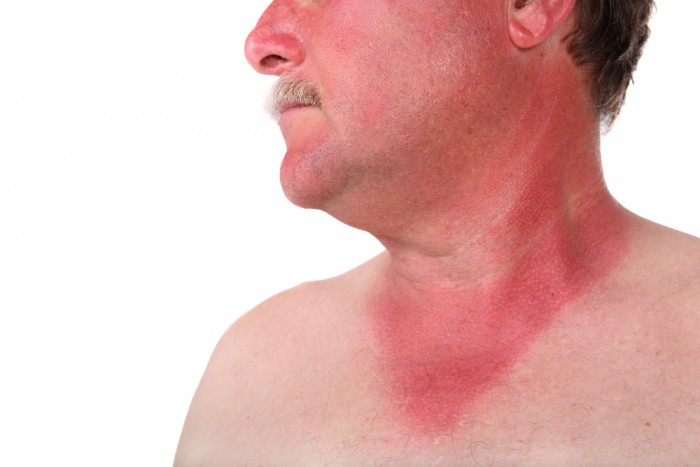Trench fever is a self-limited louse-borne rickettsial disease characterized by intermittent fever, generalized aches and pains, negligible mortality, and multiple relapses.
Etiology and Epidemiology.
The disease is caused by Rickettsia quintana, a rickettsial agent that grows extracellular in the louse intestine and is excreted in louse feces. Transmission takes place by rubbing louse feces into skin abrasions or into the bite wound left by the louse. The incubation period of the disease may vary from 5 to 38 days, but is usually two to four weeks. The disease was a major military problem during World War I, when an estimated 1,000,000 cases occurred in western Europe. It was not seen in epidemic form again until World War II when 80,000 cases were reported in eastern Europe. Recent studies have demonstrated the disease in endemic form in Mexico. During epidemics man is clearly the principal reservoir. He may also be the major long-term reservoir because the disease agent has been isolated from asymptomatic patients years after their initial infection.
Pathology and Clinical Manifestations.
Because the disease has a negligible mortality, information the histopathologic changes is limited. Biopsy studies reveal only perivascular inflammation, principally in the form of lymphocytic infiltrations. The presenting symptoms of the disease are recurrent fever, severe weakness, headache, dizziness, back and leg pains (particularly in the shins), and photophobia. Physical and laboratory examinations are not remarkable except for slight enlargement of the spleen and liver, areas of cutaneous tendernessdistributed over the body, and a moderate leukocytosis.
A transient rash of erythematous macules or papules occurs in about 70 per cent of patients. The patient’s fever may rise as high as 105° F. in an irregular fashion with intervals of nearly normal temperature between peaks of fever. The fever may last for only four or five days in the more fortunate patients. In others, the initial pyrexia may be followed after five or six days of normal temperature by one to eight relapses of fever similar to the initial episode. In still other patients, the initial fever may decline, shading into relapses without a true afebrile period, producing a “saddle-back” or “typhoidal” fever curve.
Trench Fever Diagnosis.
The most important fact supporting the diagnosis of trench fever is a history of contact with lice within the incubation period of the disease. Xenodiagnosis — the feeding of clean uninfected lice on a patient suspected of having the disease —is a useful diagnostic aid. The lice are examined a week after feeding on the patient for the presence of rickettsiae in the lumen of the gut. Tlje technique of cultivation of R. quintana on blood agar containing 10 per cent of fresh blood has also been used diagnostically. Recently developed serologic tests appear promising in the diagnosis of the disease. The differential diagnosis of the disease should include leptospirosis, dengue, malaria, relapsing fever, and the typhus fevers.
Treatment and Prognosis
Although chloramphenicol and the tetracyclines may be expected to be as effective in the treatment of trench fever as in the treatment of the other rickettsial diseases, no reliable information regarding their efficacy is available in the absence of epidemics of trench fever. Because the disease has a negligible mortality, the long-term prognosis is excellent. Even without treatment the majority of patients are able to return to full activity within one to two months after onset, although a few continue to experience recurrences of the symptoms of infection for months or years.
Prevention
The only practicable method of control of trench fever is the elimination of the louse vector of the disease.by dusting clothing with residual insecticides. Ten per cent DDT powders proved highly effective for louse control during the World War II period, but the development of DDT resistance in lice in many parts of the world has forced the use of 1 percent landline or 1 per cent malathion powders. For additional comments on louse control, see the section on The Typhus Group.
Trench fever is a bacterial infection primarily transmitted by body lice. It was first notably documented during World War I among soldiers in the trenches, hence its name.
Diagnosis
- Symptoms Recognition: Trench fever presents with symptoms like fever, headaches, dizziness, back pain, and a rash.
- Blood Tests: Detection of the bacteria responsible, Bartonella quintana, through blood tests.
- History and Exposure: Consideration of the patient’s history, particularly exposure to conditions where body lice are prevalent.
Treatment
- Antibiotics: The primary treatment for trench fever is antibiotics such as doxycycline, erythromycin, or azithromycin.
- Symptomatic Treatment: Managing symptoms such as fever and pain with appropriate medications.
- Follow-up: Monitoring the patient to ensure the complete eradication of the infection.
Prevention
- Lice Control: Since body lice are the primary transmitters, controlling lice infestations is crucial. This includes regular washing of clothes and bedding and using lice repellents.
- Hygiene: Maintaining good personal hygiene and avoiding conditions where body lice thrive.
- Public Health Measures: In settings prone to outbreaks, public health measures like providing clean clothing and facilities for regular bathing can help prevent the spread.
Trench fever, while historically associated with war conditions, can occur in any setting with poor sanitation and overcrowding, making awareness and preventive measures important in vulnerable populations.
